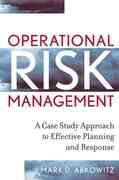Question 3. (51 marks] PAR. Company (PAR) purchased T5% of the outstanding common shares of SUB Company on December 31, Year 5, for $ 105,000. At that date, SUB had common shares outstanding, which had been issued for $100,000, and retained earnings of$30,000_ Both companies use the straightline method for capital assets and bonds. The condensed nancial statements were as follows: Balance Sheets At Deeember 31, Year 9 PAR SUB Assets: Cash 3 10,000 $ 18,000 Accounts receivable 100,000 82,000 Inventories 85,000 90,000 Investment in Sub common shares 105,000 Land 50,000 12,000 Capital assets 84,000 104,000 Accumulated depreciation 19,000 25,000 m m Liabilities and Equities: Accounts payable 3 40,000 $ 30,400 Other current liabilities 20,000 5,000 Bonds payable 50,600 Common shares 300,000 100,000 Preferred shares 20,000 Retained earnings 55,000 25,000 m m Statements of Income and Retained Earnings For year endedDeeember 31, Year 9 PAR SUB Sales $420,000 $280,000 Other Income 26 000 30 000 446,000 310,000 Cost of goods sold 315,000 240,000 Depreciation expense 21,000 10,000 Other expenses 37,000 15,000 Income tax expense 25,000 19,000 391' income 43,000 26,000 Retained earnings, beginning 25,000 59,000 Dividends 18 000 10 000 Retained earnings, ending 55 000 i 25,000 1. Both companies pay tax at the rate of 35%. 2. On July 1, Year 6, PAR purchased a parcel of land from SUB for $15,000. The land originally cost SUB $22,000. In Year 9, PAR sold 60% of this land to an outsider. 3. On December 31, Year 8, SUB's inventory included $50,000 of inventory purchased from PAR. Sales to SUB were priced at 30% markup on sales. 4. On October 1, Year 8, SUB sold a building to PAR for $30,000. The building's carrying value was $22,000 on this date. PAR estimated the remaining life of the building was 10 years at the time of the purchase from SUB. 5. SUB sold $90,000 of inventory to PAR during Year 9. At December 31, Year 9, 30% of this inventory was sold. PAR had not paid SUB for $8,000 of the sales at December 31, Year 9. SUB charges a 20% gross profit margin on sales to PAR 6. PAR provided management services to the SUB for $2,000 during Year 7. On January 1, Year 7, $20,000 of 5% cumulative preferred shares, redeemable at 1.04, were issued by SUB. PAR purchased none of the preferred shares. Dividends were last declared and paid December 31, Year 7. Calculation and allocation of Acquisition differential: Cost of 75% of SUB $105,000 Implied value (105,000/.75) 140,000 Book value of SUB: Common shares $100,000 Retained earnings 30.000 130,000 Acquisition differential 10,000 Allocated Capital assets 16,000 Bonds payable (14.000) 2,000 Balance - goodwill $ 8,000 Acquisition differential amortization and goodwill impairment schedule Balance at Amortization/ Amortization Remaining Acquisition Impairment Impairment at Dec. 31' Yr 5 Yr 6-Yr 8 Year 9 Dec. 31 Yr 9 Capital assets (10) $ 16,000 $4,800 $ 1,600 $ 9,600 Bonds payable (10) (14,000) (4,200) (1,400) (8,400) Goodwill 8,000 3.000 1,000 4,000 Total $ 10,000 3,600 $ 1,200 $ 5,200Required: Round calculations to the nearest dollar a) Prepare the 3" schedule: Intercompany profit, gains and losses (6 marks) b) Calculate the following amounts on the consolidated income statement for the year ended December 31, Year 9: (26 marks) (3.5) i) Cost of goods sold (12) ii) Consolidated Net income (Note: show the allocation of Consolidated NI to the Parent, NCI for common and NCI for preferred) (4.5) iii) Income tax expense (3.5) iv) Other income (2.5) v) Depreciation expense c) Calculate the following amounts on the consolidated balance sheet at December 31, Year 9: (19 marks) (2.5) i) Capital assets (2.5) ii) Accumulated depreciation (1.5) 111) Land (7) iv) Noncontrolling interest (show common and preferred separately) v) Accounts receivable (1) vi) Bonds payable (3.5) vii) Deferred income tax (must indicate if asset or liability) Show all calculations and amounts in brackets for the consolidated statements line items for any marks









